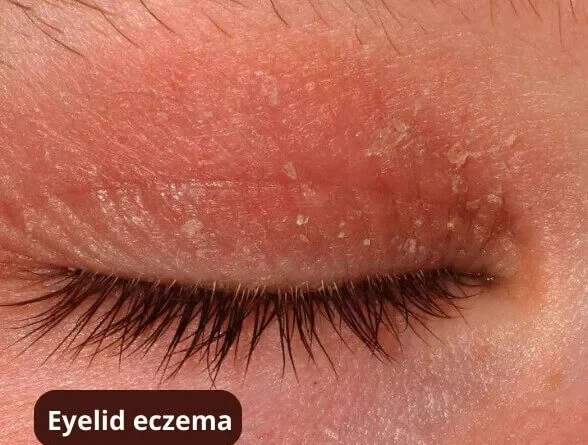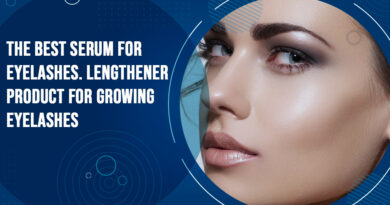Eyelid Dermatitis: Causes, Symptoms, and Effective Treatments Guide
Dermatitis under eye is a common skin condition that can cause discomfort, irritation, and cosmetic concerns. This article will explore the causes, symptoms, and various treatment options for this often frustrating condition. Whether you’re dealing with dermatitis yourself or seeking information for a loved one, this comprehensive guide will provide valuable insights to help you understand and manage the condition effectively.
What is Dermatitis Under the Eye?
Dermatitis under the eye refers to inflammation of the delicate skin beneath the eyes. This condition can manifest in various forms, including:
- Atopic dermatitis (eczema)
- Contact dermatitis
- Seborrheic dermatitis
Each type of dermatitis has unique characteristics, but they all share common symptoms such as redness, itching, and flaking of the skin.
Causes of Dermatitis Under the Eye
Understanding the underlying causes of dermatitis under the eye is crucial for effective treatment and prevention. Some common triggers include:
1. Allergies
Seasonal allergies or hypersensitivity to certain substances can lead to dermatitis under the eye. Common allergens include:
- Pollen
- Dust mites
- Pet dander
- Certain foods
2. Irritants
The skin around the eyes is particularly sensitive, making it vulnerable to irritation from various sources:
- Harsh skincare products
- Makeup and cosmetics
- Fragrances
- Soaps and detergents
3. Environmental Factors
External conditions can contribute to the development or exacerbation of dermatitis:
- Extreme temperatures
- Low humidity
- Pollution
- Sun exposure
4. Stress and Hormonal Changes
Psychological stress and hormonal fluctuations can trigger or worsen dermatitis symptoms in some individuals.
5. Genetic Predisposition
Some people may be genetically predisposed to developing dermatitis, particularly atopic dermatitis.
Symptoms of Dermatitis Under the Eye
Recognizing the symptoms of dermatitis under the eye is essential for prompt diagnosis and treatment. Common signs include:
- Redness and inflammation
- Itching and burning sensation
- Dryness and flaking of the skin
- Swelling or puffiness
- Rough or scaly patches
- Increased sensitivity to skincare products
- Darkening of the skin (in chronic cases)
It’s important to note that symptoms can vary in severity and may come and go in cycles.
Diagnosing Dermatitis Under the Eye
If you suspect you have dermatitis under the eye, it’s crucial to consult a dermatologist or healthcare professional for an accurate diagnosis. The diagnostic process may involve:
- Physical examination of the affected area
- Review of medical history and potential triggers
- Patch testing to identify allergens (in cases of suspected contact dermatitis)
- Skin biopsy (in rare cases)
Treatment Options for Dermatitis Under the Eye
Managing dermatitis under the eye often requires a multifaceted approach. Here are some effective treatment options:
1. Topical Medications
- Corticosteroid creams: These can help reduce inflammation and itching. However, long-term use should be monitored by a healthcare professional due to potential side effects.
- Calcineurin inhibitors: Medications like tacrolimus and pimecrolimus can help manage symptoms without the side effects associated with steroids.
- Antihistamine creams: These can provide relief from itching caused by allergic reactions.
2. Moisturizers and Emollients
Keeping the skin hydrated is crucial in managing dermatitis. Look for fragrance-free, hypoallergenic moisturizers specifically formulated for sensitive skin.
3. Lifestyle Changes
- Identify and avoid triggers: Keep a journal to track potential allergens or irritants.
- Adjust skincare routine: Use gentle, fragrance-free cream and avoid harsh exfoliants.
- Protect the skin: Apply sunscreen daily and shield the face from extreme weather conditions.
4. Stress Management
Incorporate stress-reduction techniques such as meditation, yoga, or deep breathing exercises into your daily routine.
5. Dietary Modifications
In some cases, dietary changes may help alleviate symptoms. Consider:
- Increasing intake of omega-3 fatty acids
- Avoiding potential food allergens
- Staying hydrated
6. Natural Remedies
Some people find relief with natural treatments, although their effectiveness may vary:
- Aloe vera gel
- Coconut oil
- Chamomile compresses
- Colloidal oatmeal baths
Always consult with a healthcare professional before trying new treatments, especially natural remedies.
Preventing Dermatitis Under the Eye
While it’s not always possible to prevent dermatitis entirely, you can take steps to reduce the risk of flare-ups:
- Maintain a consistent skincare routine with gentle, hypoallergenic products.
- Remove makeup thoroughly before bed.
- Avoid touching or rubbing the eye area excessively.
- Use a humidifier in dry environments.
- Manage stress through regular exercise and relaxation techniques.
- Stay hydrated and maintain a balanced diet rich in anti-inflammatory foods.
When to Seek Medical Attention
While mild cases of dermatitis under the eye can often be managed at home, it’s important to consult a healthcare professional if:
- Symptoms persist or worsen despite home treatment
- The condition interferes with daily activities or sleep
- You experience severe pain or discomfort
- There are signs of infection (increased redness, warmth, or pus)
- You develop new or unexplained symptoms
Living with Dermatitis Under the Eye
Dealing with dermatitis under the eye can be challenging, but with proper management, many people can achieve significant improvement in their symptoms. Remember that treatment may require some trial and error to find the most effective approach for your individual case.
Stay patient and consistent with your treatment plan, and don’t hesitate to communicate openly with your healthcare provider about your concerns and progress. With the right care and attention, you can minimize the impact of dermatitis under the eye on your daily life and maintain healthy, comfortable skin.
Conclusion
Dermatitis under the eye is a common condition that can significantly impact one’s quality of life. By understanding its causes, recognizing symptoms, and exploring various treatment options, you can take control of your skin health. Remember that every case is unique, and what works for one person may not work for another. Stay informed, be proactive in your skincare routine, and work closely with healthcare professionals to develop a personalized management plan.
With patience, persistence, and the right approach, you can effectively manage dermatitis under the eye and enjoy healthier, more comfortable skin. Don’t let this condition hold you back – take the first step towards clearer, calmer skin today.




